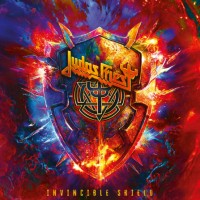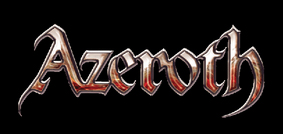Azeroth - Biography
This band's profile is 'invisible', meaning that it's much less prominent on the site - either because it's incomplete, or maybe doesn't entirely fit MS format.
Logo
2000-
Biography
Azeroth's history begins in 1995 in Buenos Aires, Argentina, when Fernando Ricciardulli (bass and keyboards) and María Eugenia Ricciardulli (drums) decide to create the band together with the guitar player Juan Manuel Villagra. Their idea is to make a heavy metal where the melody and strength should be the main elements. Different musicians made part of the history of the band.
In 1998, Azeroth starts to move through all the underground circuit. In the same year, they record a demo of 3 songs used to show their music to the media and record companies. It is in this way that Nems Enterprises becomes interested in the project and contacts them.
During the second half of 1999, they record the material that was to make part of the first album, simply called "Azeroth", which has the participation of Christian Bertoncelli (Imperio, Renacer) and Adrián Barilari (Rata Blanca) as main voices.
The material is mixed by the German producer Charlie Bauerfeind in Hamburg (Germany), who has worked with bands of the importance of Helloween, Blind Guardian, Hammerfall and Primal Fear, among others. The CD cover is made by the Belgian Eric Phillippe, who has worked in the first albums of Rhapsody and Sonata Ártica.
Azeroth have several live shows after the exit to the market of the album, and they participate as invited band of important bands such as Helloween, Nightwish, in the Metal Rock Festival (together with Barón Rojo) and the Progressive Power Festival (together with Vision Divine and Labyrinth). Then, they participate in the "Campaña al Desierto Tour", where they visit different cities in Argentina and Uruguay. Meanwhile, the material is well accepted by the national specialized media and also by foreign countries, and so the album is licensed in Spain and Japan.
During 2001, Azeroth records a version of "Rompe el hechizo" for the tribute album to Rata Blanca, also mastered by Nems Enterprises, and mixed by the German producer and guitarist of Iron Savior, Piet Sielck.
In 2002, while the composition and production of the second album is being finished, the band members decide to continue their musical career in Europe, more precisely in Spain. Towards the end of that year, they start recording the new album and they finish about the half of 2003. This new album, called "II", has the participation of Hansi Kursch (singer of Blind Guardian) making chorus as invited musician. The CD cover is made by Daniel Trajtemberg, who has previously worked with Rata Blanca, among others.
The mixing of this material is one of the main reasons why this album exit to the market almost 5 years after, because the producers who were to work in the album were busy and it was also necessary to work more than wanted with certain technical problems (not regarding the band at all). Finally, who mixes the material is the Finish Kimmo Ahola and it is mastered in Mastering Noise Master Lab, Sweden.
Nowadays, Fernando Ricciardulli lives in Mexico and he's already working with Mexican musicians in the songs that will make part of the third album of the band. As a steady member of Azeroth, there is Christian Bertoncelli (Renacer, Imperio), who sang as invited musician in the first production together with Adrián Barilari (Rata Blanca).
Duskwood Records aims to a professional production and the importance of the great European bands, giving support to Azeroth in this new stage believing in their huge potential and professionalism and diffusing music in a moment so delicate to the record industry.
In 1998, Azeroth starts to move through all the underground circuit. In the same year, they record a demo of 3 songs used to show their music to the media and record companies. It is in this way that Nems Enterprises becomes interested in the project and contacts them.
During the second half of 1999, they record the material that was to make part of the first album, simply called "Azeroth", which has the participation of Christian Bertoncelli (Imperio, Renacer) and Adrián Barilari (Rata Blanca) as main voices.
The material is mixed by the German producer Charlie Bauerfeind in Hamburg (Germany), who has worked with bands of the importance of Helloween, Blind Guardian, Hammerfall and Primal Fear, among others. The CD cover is made by the Belgian Eric Phillippe, who has worked in the first albums of Rhapsody and Sonata Ártica.
Azeroth have several live shows after the exit to the market of the album, and they participate as invited band of important bands such as Helloween, Nightwish, in the Metal Rock Festival (together with Barón Rojo) and the Progressive Power Festival (together with Vision Divine and Labyrinth). Then, they participate in the "Campaña al Desierto Tour", where they visit different cities in Argentina and Uruguay. Meanwhile, the material is well accepted by the national specialized media and also by foreign countries, and so the album is licensed in Spain and Japan.
During 2001, Azeroth records a version of "Rompe el hechizo" for the tribute album to Rata Blanca, also mastered by Nems Enterprises, and mixed by the German producer and guitarist of Iron Savior, Piet Sielck.
In 2002, while the composition and production of the second album is being finished, the band members decide to continue their musical career in Europe, more precisely in Spain. Towards the end of that year, they start recording the new album and they finish about the half of 2003. This new album, called "II", has the participation of Hansi Kursch (singer of Blind Guardian) making chorus as invited musician. The CD cover is made by Daniel Trajtemberg, who has previously worked with Rata Blanca, among others.
The mixing of this material is one of the main reasons why this album exit to the market almost 5 years after, because the producers who were to work in the album were busy and it was also necessary to work more than wanted with certain technical problems (not regarding the band at all). Finally, who mixes the material is the Finish Kimmo Ahola and it is mastered in Mastering Noise Master Lab, Sweden.
Nowadays, Fernando Ricciardulli lives in Mexico and he's already working with Mexican musicians in the songs that will make part of the third album of the band. As a steady member of Azeroth, there is Christian Bertoncelli (Renacer, Imperio), who sang as invited musician in the first production together with Adrián Barilari (Rata Blanca).
Duskwood Records aims to a professional production and the importance of the great European bands, giving support to Azeroth in this new stage believing in their huge potential and professionalism and diffusing music in a moment so delicate to the record industry.



